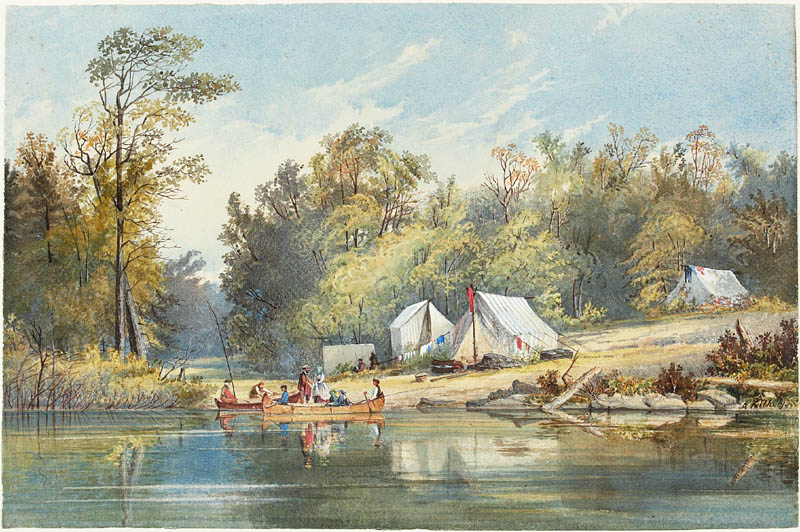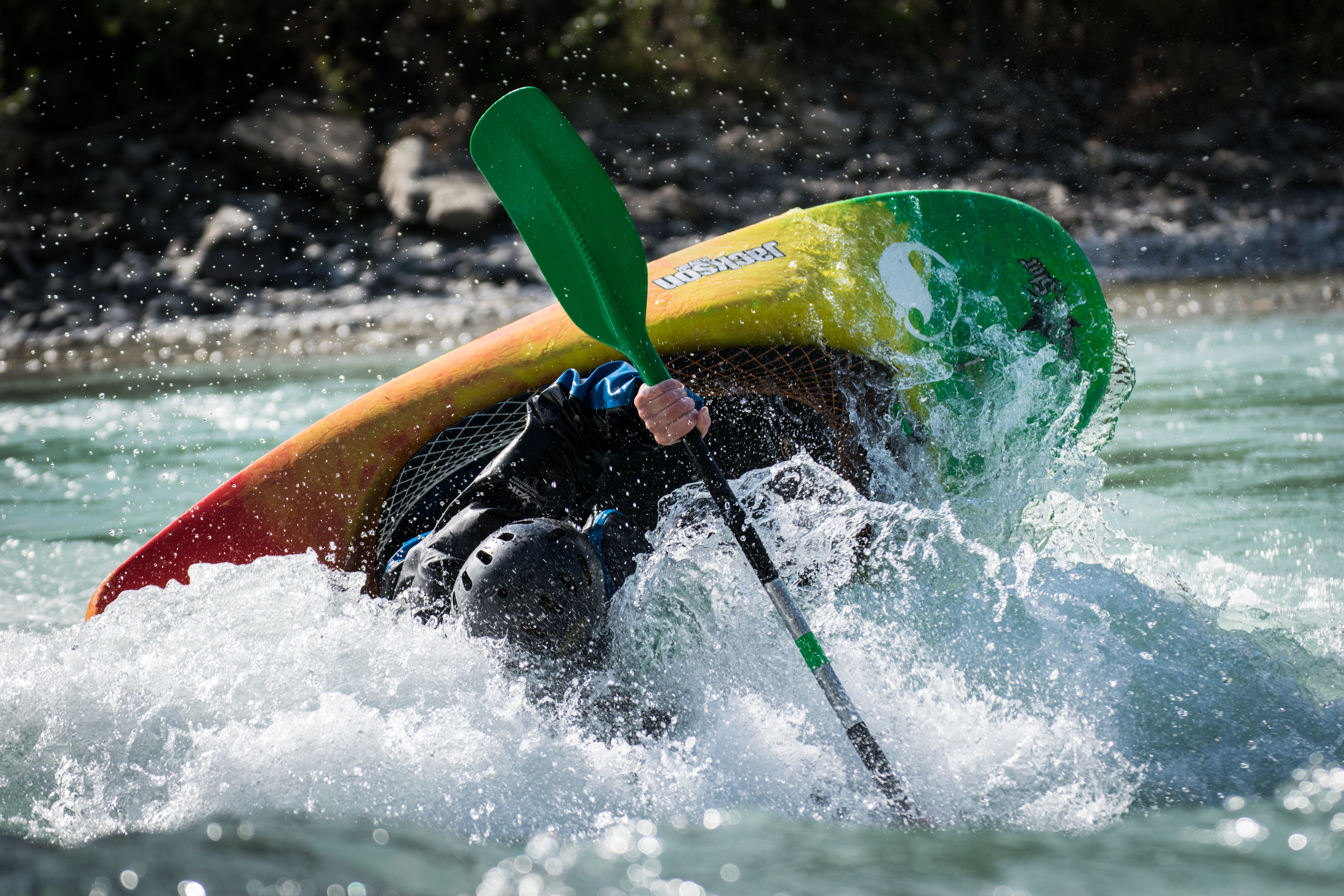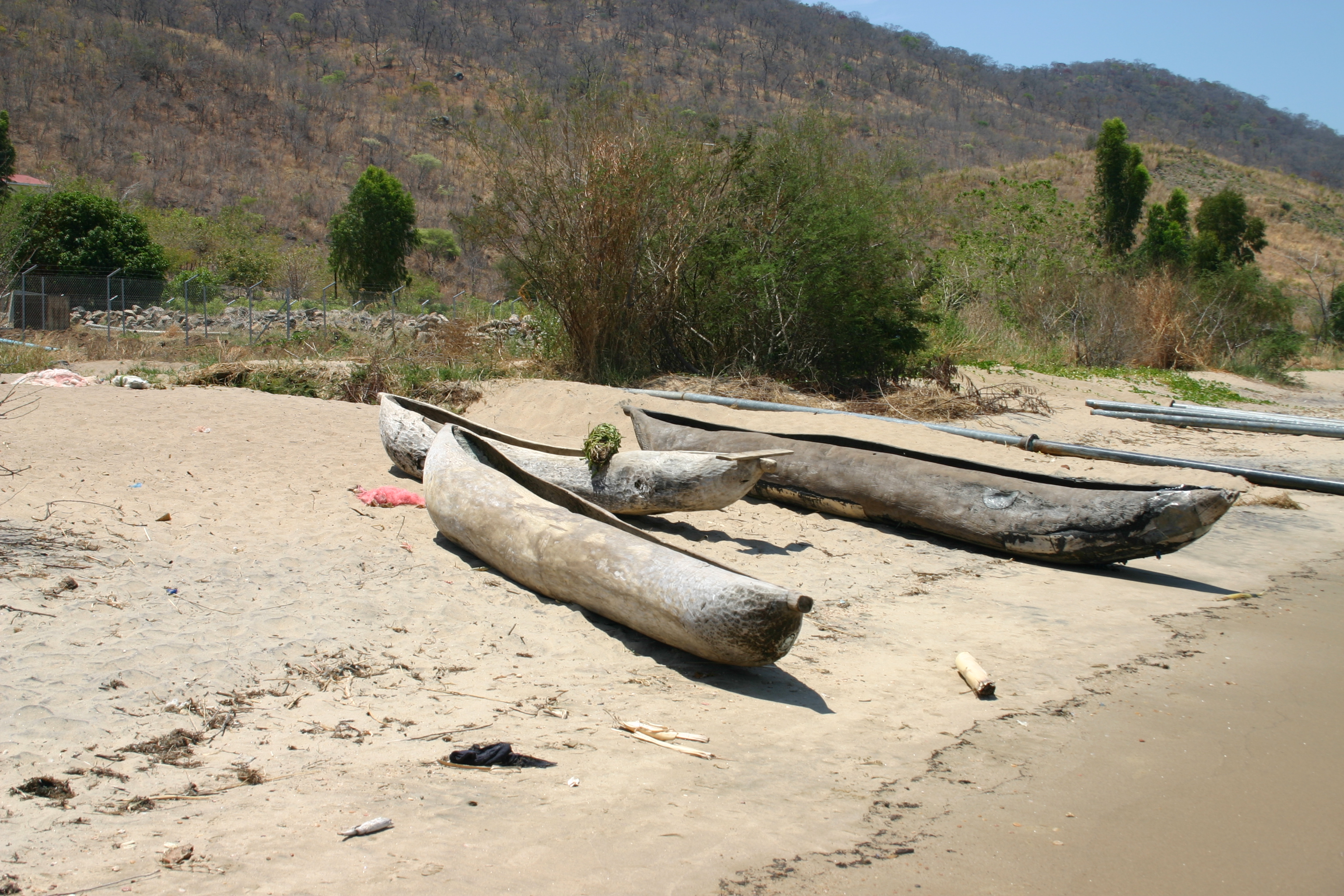|
Canoe
A canoe is a lightweight narrow water vessel, typically pointed at both ends and open on top, propelled by one or more seated or kneeling paddlers facing the direction of travel and using a single-bladed paddle. In British English, the term ''canoe'' can also refer to a kayak, while canoes are called Canadian or open canoes to distinguish them from kayaks. Canoes were developed by cultures all over the world, including some designed for use with sails or outriggers. Until the mid-19th century, the canoe was an important means of transport for exploration and trade, and in some places is still used as such, sometimes with the addition of an outboard motor. Where the canoe played a key role in history, such as the Northern United States, Canada, and New Zealand, it remains an important theme in popular culture. Canoes are now widely used for competition and pleasure, such as racing, whitewater, touring and camping, freestyle and general recreation. Canoeing has been part ... [...More Info...] [...Related Items...] OR: [Wikipedia] [Google] [Baidu] |
Canoeing And Kayaking At The Summer Olympics
Canoeing has been featured as competition sports in the Summer Olympic Games since the 1936 Games in Berlin, although they were demonstration sports at the 1924 Games in Paris. There are two disciplines of canoeing in Olympic competition: slalom and sprint. Two styles of boats are used in this sport: canoes with 1 or 2 canoers and kayaks with 1, 2 or 4 kayakers. This leads to the name designation of each event. For example, "C-1" is a ''canoe singles'' event and "K-2" is a ''kayak doubles'' event. Races are usually 500 metres or 1000 metres long, although there were also 10 km events from 1936 to 1956. On 13 August 2009, it was announced by the International Canoe Federation that the men's 500 m events would be replaced at the 2012 Summer Olympics by 200 m events with one of them being K-1 200 m for the women. The other events for men at 200 m will be C-1, K-1, and K-2. This was confirmed at their 2009 Board of Directors meeting in Windsor, Berkshire, Great Britain o ... [...More Info...] [...Related Items...] OR: [Wikipedia] [Google] [Baidu] |
Canoe Racing
A canoe is a lightweight narrow watercraft, water vessel, typically pointed at both ends and open on top, propelled by one or more seated or kneeling paddlers facing the direction of travel and using a single-bladed paddle. In British English, the term ''canoe'' can also refer to a kayak, while canoes are called Canadian (canoe), Canadian or open canoes to distinguish them from kayaks. Canoes were developed by cultures all over the world, including some designed for use with sails or outriggers. Until the mid-19th century, the canoe was an important means of transport for exploration and trade, and in some places is still used as such, sometimes with the addition of an outboard motor. Where the canoe played a key role in history, such as the Northern United States, Canada, and New Zealand, it remains an important theme in popular culture. Canoes are now Canoeing, widely used for competition and pleasure, such as Canoe racing, racing, whitewater canoeing, whitewater, touring ... [...More Info...] [...Related Items...] OR: [Wikipedia] [Google] [Baidu] |
Canoeing
Canoeing is an activity which involves paddling a canoe with a single-bladed paddle. Common meanings of the term are limited to when the canoeing is the central purpose of the activity. Broader meanings include when it is combined with other activities such as canoe camping, or where canoeing is merely a transportation method used to accomplish other activities. Most present-day canoeing is done as or as a part of a sport or recreational activity. In some parts of Europe canoeing refers to both canoeing and kayaking, with a canoe being called an ''open canoe''. A few of the recreational forms of canoeing are canoe camping and canoe racing. Other forms include a wide range of canoeing on lakes, rivers, oceans, ponds and streams. History of organized recreational canoeing Canoeing is an ancient mode of transportation. Modern recreational canoeing was established in the late 19th century. In 1924, canoeing associations from Austria, Germany, Denmark and Sweden founded the ''I ... [...More Info...] [...Related Items...] OR: [Wikipedia] [Google] [Baidu] |
Canoe Camping
Canoe camping, also known as touring, tripping or expedition canoeing, is a combination of canoeing and camping. Like backpacking, canoe campers carry enough with them to travel and camp for several days, but do so via a canoe or kayak. Description A canoeist can transport significantly heavier and bulkier loads than a backpacker or even a kayaker can. Portaging by foot is sometimes necessary to pass between water bodies or around hazardous obstacles such as rapids or waterfalls, but most of the time canoe campers travel on water. Because they usually don't continuously carry their gear on their backs, canoe campers can bring more food and gear and undertake longer trips. This is especially the case with food which, unlike gear where the weight is essentially fixed regardless of the trip duration, increases in weight for each additional day of provision. On rivers, high water levels after storms can make river travel hazardous, while on lakes, winds and thunderstorms can produc ... [...More Info...] [...Related Items...] OR: [Wikipedia] [Google] [Baidu] |
Kayak
A kayak is a small, narrow watercraft which is typically propelled by means of a double-bladed paddle. The word kayak originates from the Greenlandic word ''qajaq'' (). The traditional kayak has a covered deck and one or more cockpits, each seating one paddler. The cockpit is sometimes covered by a spray deck that prevents the entry of water from waves or spray, differentiating the craft from a canoe. The spray deck makes it possible for suitably skilled kayakers to roll the kayak: that is, to capsize and right it without it filling with water or ejecting the paddler. ] Some modern boats vary considerably from a traditional design but still claim the title "kayak", for instance in eliminating the cockpit by seating the paddler on top of the boat ("sit-on-top" kayaks); having inflated air chambers surrounding the boat; replacing the single hull with twin hulls; and replacing paddles with other human-powered propulsion methods, such as foot-powered rotational propellers and "fli ... [...More Info...] [...Related Items...] OR: [Wikipedia] [Google] [Baidu] |
Canoe Freestyle
Canoe freestyle (also known as playboating) is a discipline of whitewater kayaking or canoeing where people perform various technical moves in one place (a playspot), as opposed to downriver whitewater canoeing or kayaking where the objective is to travel the length of a section of river (although whitewater paddlers will often stop and play en route). Specialised canoes or kayaks (boats) known as playboats are often used, but any boat can be used for playing. The moves and tricks are often similar to those performed by snowboarders, surfers or skaters, where the athlete completes spins, flips, turns, etc. With modern playboats it is possible to get the kayak and the paddler completely airborne while performing tricks. The competitive side of playboating is known as freestyle kayaking (formerly called rodeo). Playspots Playspots are typically stationary features on rivers, in particular standing waves (which may be breaking or partially breaking), hydraulic jumps, 'holes' and ' ... [...More Info...] [...Related Items...] OR: [Wikipedia] [Google] [Baidu] |
Canadian (canoe)
Canadian is the byname used in some countries for the descendants of the birch bark canoe that was used by the indigenous peoples of Northern America as a convenient means of transportation in the densely forested and impassable areas of Northern America. In the United Kingdom and several other European countries the kayak is considered to be a kind of canoe. (Technically this is understandable, as one can easily see when a whitewater kayak is converted into a decked whitewater canoe just by taking the seat out and paddle it kneeling with a single blade paddle.) To distinguish canoes from kayaks, a touring, whitewater and racing canoe are then often called 'Canadian canoe' or 'Canadian' for short — e.g. Canadier in German, Kanadensare in Swedish, Canadees in Dutch, et cetera. This naming practice has led to confusion, with sea kayaks called sea canoes, kayakers called canoeists, and canoes sometimes even called 'Canadian kayaks'... It was one of the reasons why wo ... [...More Info...] [...Related Items...] OR: [Wikipedia] [Google] [Baidu] |
Whitewater Canoeing
Whitewater canoeing is the sport of paddling a canoe on a moving body of water, typically a whitewater river. Whitewater canoeing can range from simple, carefree gently moving water, to demanding, dangerous whitewater. River rapids are graded like ski runs according to the difficulty, danger or severity of the rapid. Whitewater grades (or classes) range from I or 1 (the easiest) to VI or 6 (the most difficult/dangerous). Grade/Class I can be described as slightly moving water with ripples. Grade/Class VI can be described as severe or almost unrunnable whitewater, such as Niagara Falls. Design The canoe (or just 'boat') used in casual whitewater canoeing is different from those used in whitewater racing. Traditionally, canoes were made of tree bark, sewn with tree roots and sealed with resin. Early whitewater boats were made of wood followed by aluminium and later fiberglass or kevlar, followed by more exotic composite materials including spectra, vectran and carbon fiber. The v ... [...More Info...] [...Related Items...] OR: [Wikipedia] [Google] [Baidu] |
Birchbark Canoe, Abbe Museum, Bar Harbor, ME IMG 2301
Birch bark or birchbark is the bark of several Eurasian and North American birch trees of the genus ''Betula''. The strong and water-resistant cardboard-like bark can be easily cut, bent, and sewn, which has made it a valuable building, crafting, and writing material, since pre-historic times. Today, birch bark remains a popular type of wood for various handicrafts and arts. Birch bark also contains substances of medicinal and chemical interest. Some of those products (such as betulin) also have fungicidal properties that help preserve bark artifacts, as well as food preserved in bark containers. Collection and storage Removing birch bark from live trees is harmful to tree health and should be avoided. Instead, it can be removed fairly easily from the trunk or branches of dead wood, by cutting a slit lengthwise through the bark and pulling or prying it away from the wood. The best time for collection is spring or early summer, as the bark is of better quality and most easily ... [...More Info...] [...Related Items...] OR: [Wikipedia] [Google] [Baidu] |
1936 Summer Olympics
The 1936 Summer Olympics (German: ''Olympische Sommerspiele 1936''), officially known as the Games of the XI Olympiad (German: ''Spiele der XI. Olympiade'') and commonly known as Berlin 1936 or the Nazi Olympics, were an international multi-sport event held from 1 to 16 August 1936 in Berlin, Germany. Berlin won the bid to host the Games over Barcelona at the 29th IOC Session on 26 April 1931. The 1936 Games marked the second and most recent time the International Olympic Committee gathered to vote in a city that was bidding to host those Games. Later rule modifications forbade cities hosting the bid vote from being awarded the games. To outdo the 1932 Los Angeles Games, Reich Führer Adolf Hitler had a new 100,000-seat track and field stadium built, as well as six gymnasiums and other smaller arenas. The Games were the first to be televised, with radio broadcasts reaching 41 countries.Rader, Benjamin G. "American Sports: From the Age of Folk Games to the Age of Televised Spo ... [...More Info...] [...Related Items...] OR: [Wikipedia] [Google] [Baidu] |
Paddle
A paddle is a handheld tool with an elongated handle and a flat, widened distal end (i.e. the ''blade''), used as a lever to apply force onto the bladed end. It most commonly describes a completely handheld tool used to propel a human-powered watercraft by pushing water in a direction opposite to the direction of travel (i.e. paddling). It is different to an oar (which is similar in shape and performs the same function via rowing) in that the latter is attached to the watercraft via a fulcrum. However, the term "paddle" can also be used to describe objects of similar shapes or functions: *A rotating set of paddle boards known as a paddle wheel is used to propel a steamboat (i.e. paddle steamer). *A number of games (e.g. ping-pong), a "paddle" or "bat" is a small racket used to strike a ball. *A mixing paddle is an agitator device used to stir and more thoroughly mix separate ingredients within a mixture. *A spanking paddle is used in corporal punishment, typically to forcefull ... [...More Info...] [...Related Items...] OR: [Wikipedia] [Google] [Baidu] |
Dugout (boat)
A dugout canoe or simply dugout is a boat made from a hollowed tree. Other names for this type of boat are logboat and monoxylon. ''Monoxylon'' (''μονόξυλον'') (pl: ''monoxyla'') is Greek – ''mono-'' (single) + '' ξύλον xylon'' (tree) – and is mostly used in classic Greek texts. In German, they are called Einbaum ("one tree" in English). Some, but not all, pirogues are also constructed in this manner. Dugouts are the oldest boat type archaeologists have found, dating back about 8,000 years to the Neolithic Stone Age. This is probably because they are made of massive pieces of wood, which tend to preserve better than others, such as bark canoes. Along with bark canoes and hide kayaks, dugouts were also used by Indigenous peoples of the Americas. Construction Construction of a dugout begins with the selection of a log of suitable dimensions. Sufficient wood must be removed to make the vessel relatively light in weight and buoyant, yet still strong enough to su ... [...More Info...] [...Related Items...] OR: [Wikipedia] [Google] [Baidu] |









